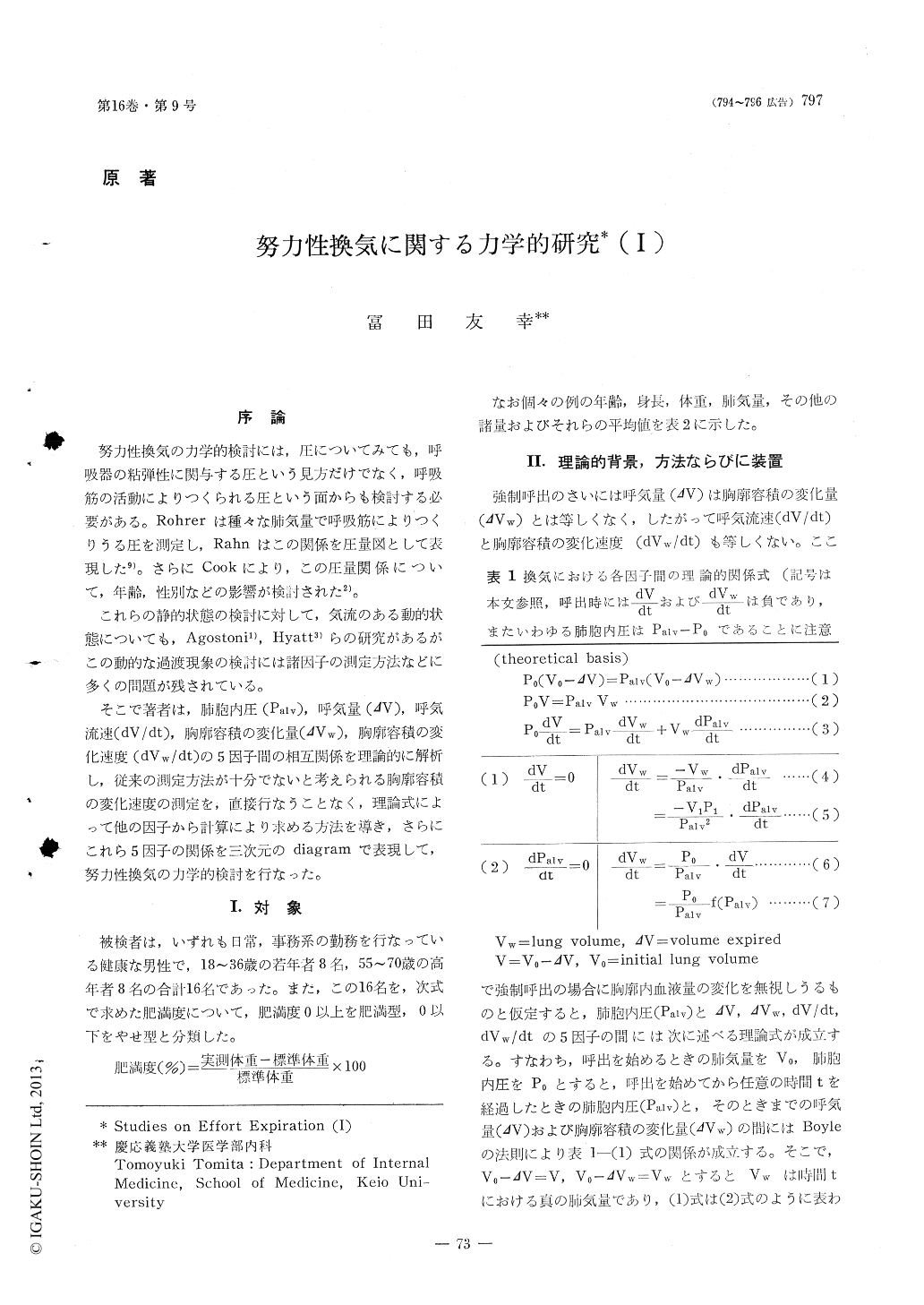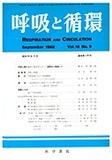Japanese
English
- 有料閲覧
- Abstract 文献概要
- 1ページ目 Look Inside
序論
努力性換気の力学的検討には,圧についてみても,呼吸器の粘弾性に関与する圧という見方だけでなく,呼吸筋の活動によりつくられる圧という面からも検討する必要がある。Rohrerは種々な肺気量で呼吸筋によりつくりうる圧を測定し,Rahnはこの関係を圧量図として表現した9)。さらにCookにより,この圧量関係について,年齢,性別などの影響が検討された2)。
これらの静的状態の検討に対して,気流のある動的状態についても,Agostoni1), Hyatt3)らの研究があるがこの動的な過渡現象の検討には諸因子の測定方法などに多くの問題が残されている。
そこで著者は,肺胞内圧(Palv),呼気量(ΔV),呼気流速(dV/dt),胸廓容積の変化量(ΔVw),胸廓容積の変化速度(dVw/dt)の5因子間の相互関係を理論的に解析し,従来の測定方法が十分でないと考えられる胸廓容積の変化速度の測定を,直接行なうことなく,理論式によって他の因子から計算により求める方法を導き,さらにこれら5因子の関係を三次元のdiagramで表現して,努力性換気の力学的検討を行なった。
The present study aimed to analyze the mechanics of maximal effort expiration in terms of the maximal rate of volume displa-cement of the chest wall as well as to the maximal alveolar pressure produced.
Based upon the set of some theoretically established formulae these parameters of the maximal rate of volume displacement of thechest wall and of the maximal alveolar pres-sure produced under various conditions were calculated.
For the particular analysis the well-coo-perative healthy subjects sat in the special-ly-designed body-plethysmograph repeated their maximally forced expiration with vari-ous airway resistance applied externally.
The rate of volume change of chest wall during the forced expiration was found 8 or more L/sec even when the external airway was completely shut. The maximal alveolar pressure at 50%VC level on the flow rate of 2 L/sec was ranged between 83 to 218 cmH2O with the mean of 136.1 cmH2O.
The flow-pressure relationships on the forced expiration was discussed with regard to the variables to be concerned. In the re-ferring discussion the flow was represented by the volume-displacement of the chest wall and the pressure by the mouth pressure.

Copyright © 1968, Igaku-Shoin Ltd. All rights reserved.


